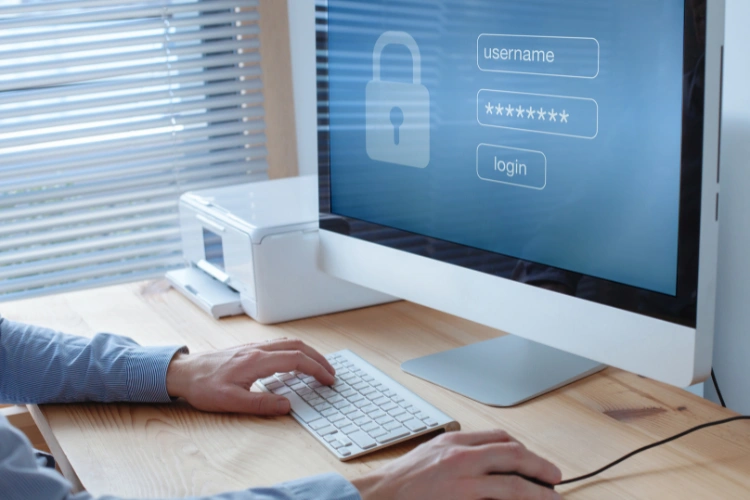If your business isn’t thinking about security compliance standards to protect its own business, then it better at least be concerned about protecting its customers’ data. That’s because businesses don’t want to do business with vendors, suppliers, or partners they can’t trust.
Here’s what you need to know to make sure your password management system meets security compliance standards.
TeamPassword is the easiest way to meet password security compliance standards. Don’t believe us? Sign up for a 14-day free trial today and try for yourself.
[Table of Contents]
- What is security compliance?
- Types of security compliance
- What is password security compliance?
- Password security requirements for SOC2
What is security compliance?
Security compliance is the active steps taken and processes implemented by an organization to protect data—their data as well as users’ data. This includes both robust measures to protect and monitor data as well as realistic risk assessments to understand how potential breaches could impact the organization.
It’s important to emphasize that security compliance isn’t something achieved once and then never thought about again:
-
Security compliance standards change with new knowledge and tools, so what is considered compliant today won’t be in a few months or years.
-
Security compliance is an active state, meaning that processes must be implemented and followed consistently to remain compliant with (cyber)security standards.
-
Many security compliance standards require regular company audits for re-certification to confirm the organization is maintaining their strict adherence to safe and secure data processes.
Types of security compliance
Security compliance standards are often industry or function specific. That means the average company is likely to pursue multiple certifications as a way to present their commitment to keeping data safe.
System and Organization Controls (SOC) is probably the most well-known security standard. Achieving SOC 1, SOC 2 Type I, and/or SOC 2 Type II can be considered the minimum requirement to even enter some markets as most companies are unwilling to share any data with businesses that aren’t undertaking SOC security audits on a regular basis.
System and Organization Controls (SOC)
Developed by the American Institute of Certified Public Accountants (AICPA), SOC documents the internal controls in place regarding any data that could impact financial statements, where the audited organization or those sharing data with it.
It’s important to note that SOC 1, 2, and 3 aren’t levels of security compliance, but rather measuring and reporting on different things in different ways.
Here are the main levels of SOC compliance:
-
SOC 1: A SOC 1 report is designed for organizations that handle a customer’s financial data, such as a payment processor, point of sale system, or payroll provider. It’s meant to show customers that their financial data will be handled securely.
-
SOC 2: SOC 2 reports allow organizations to demonstrate their cloud and data center security controls are sufficient. SOC 2 Type I is an audit performed at a moment in time. SOC 2 Type II is an ongoing audit that measures compliance over a period of time. In both cases, they are attestation reports where management states their commitment to securely processing data and then the CPA firm agrees or disagrees with their claims.
-
SOC 3: SOC 3 reports do not contain confidential information and are therefore usually performed after successful SOC 1 and/or SOC 2 audits to provide useful marketing materials. They are written for a general audience.
Other security compliance standards
While SOC is one of the most recognized security compliance standards, it is far from the only one. In fact, while you might not think of them as similar to SOC, you’re probably at least somewhat familiar with the majority of these other security compliance standards:
-
CCPA/CPRA: The California Consumer Privacy Act (CCPA) and more recent California Privacy Rights Act (CPRA) gives residents of California the right to view any of their personal data stored by businesses with at least $25 million in revenue or 50,000 users, as well as the data shared by them with third parties, and sue if they feel their data has been misused.
-
FedRAMP: The Federal Risk and Authorization Management Program (FedRAMP) provides a standardized approach to security assessment, monitoring, and authorization for cloud offerings. Businesses looking to provide cloud services to the federal government must prove they are FedRAMP compliant.
-
GDPR: Since 2018, General Data Protection Regulation (GDPR) provides rules for how businesses must process the personal data of EU citizens.
-
Gramm-Leach-Bliley Act (GLBA): The United States Congress passed GLBA in 1999 to improve consumer privacy and cybersecurity in the financial services industry.
-
HIPAA: The US Health Insurance Portability and Accountability Act (HIPAA) creates extremely strict standards for how a patient’s digital health data may be used and how it must be stored, as well as provides provisions for hefty fines and/or prison terms when health data is not stored, accessed, or shared according to the HIPAA regulations.
-
PCI DSS: The Payment Card Industry Data Security Standard (PCI DSS) protects credit card users by regulating how cardholder data is used before, during, and after transactions.
-
Sarbanes-Oxley Act (SOX): Introduced in the wake of the Enron, WorldCom, and Tyco scandals, SOX is designed to increase the transparency and accuracy of corporate financial reporting.
What is password security compliance?
Password security compliance includes the specific processes put in place and followed by organizations to prevent any breach to their business due to weak, pwned, or reused passwords.
While password management doesn’t need to be hard, the fact is that it is an often overlooked part of cybersecurity. Since processes from the early days of a business become entrenched, bad practices that were implemented early without much thought tend to become entrenched.
For example, many companies still insist on using a password sheet even though it opens them up to major security breaches.
Password security requirements for SOC 2
The American Institute of Certified Public Accountants (AICPA) does not provide explicit, step-by-step instructions on how to meet their standards. Instead, they have Trust Services Principles, which highlight what is expected of a cybersecurity compliant organization.
Trust Service Principles
While the Trust Service Principles don’t tell organizations exactly how to keep their users’ data secure, they provide a philosophical framework that, when implemented, prove a business’s commitment to cybersecurity.
These are the five Trust Service Principles:
-
Security: This is the practical protection of data and systems through things like access control, firewalls, and identity management systems.
-
Confidentiality: In essence, data must be encrypted at all times, when stored or transmitted. Furthermore, the “principle of least privilege,” i.e. employees should have the bare-minimum access to do their job, must be followed.
-
Availability: Systems should be fault-tolerant so organizations can maintain a reasonable and explicit SLA.
-
Privacy: Any collection, storage, or processing of personally identifiable information must follow the organization’s written data usage and privacy policy.
-
Processing integrity: Businesses should have robust quality assurance and performance management processes in place so that their systems function as designed without errors, vulnerabilities, delays, or bugs.
Trust Service Principles and password managers
Considering these five Trust Service Principles, password security compliance must include a password manager. Only password managers store and transmit passwords securely, ensure availability of passwords, and keep them private, even when sharing accounts with teams.
Furthermore, TeamPassword utilizes multi-factor authentication (MFA) and data encryption to help you keep personal data private and confidential.
TeamPassword can help you reach SOC 2 Type II security compliance
TeamPassword is a highly secure, easy-to-implement password manager that can make password security compliance a breeze for businesses of all sizes.
We are committed to proving our security compliance standards through regular auditing. Our hosting provider is accredited with the the following standards:
-
SOC 1 and SOC 2
-
SSAE 16
-
ISAE 3402 (Previously SAS 70 Type II)
-
ISO 27001
-
PCI Level 1
-
FISMA Moderate
-
Sarbanes-Oxley (SOX)
We keep your passwords safe, secure, and easily accessible. That makes it easier for you to keep your clients’ data safe, too.
TeamPassword helps you protect your data and that of your clients. Don’t believe us? Sign up for a 14-day free trial today and try for yourself.

